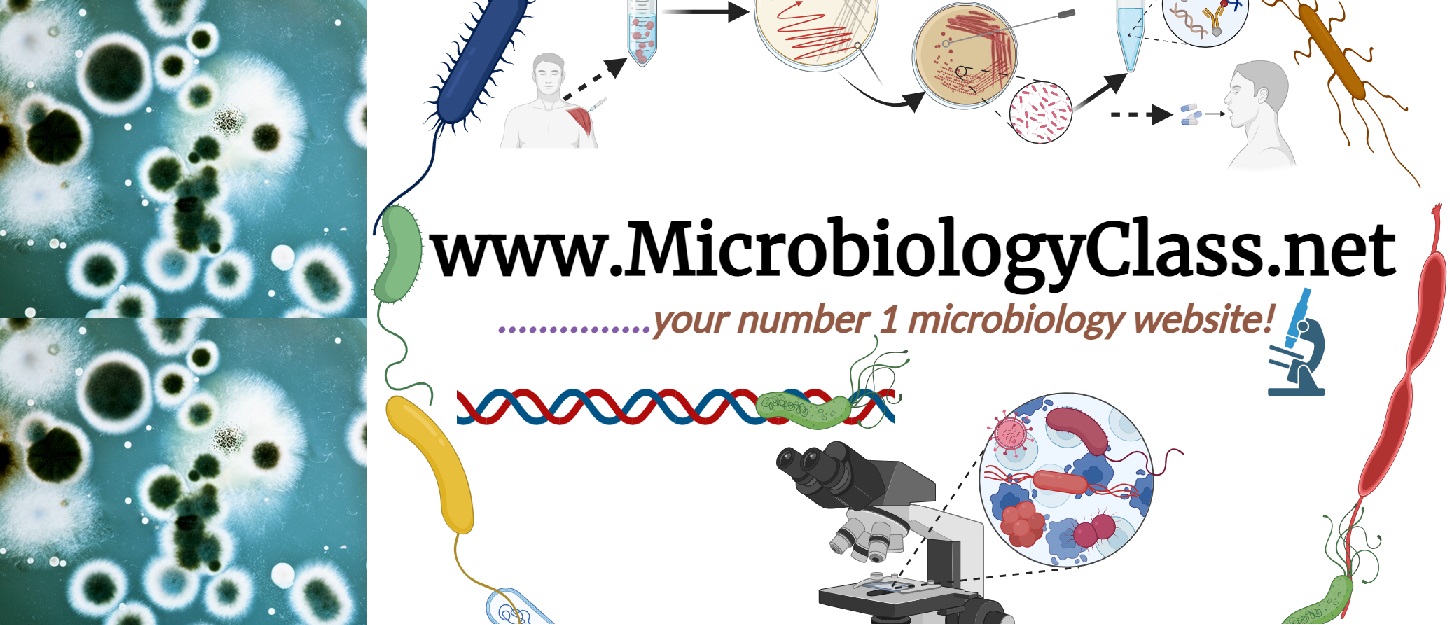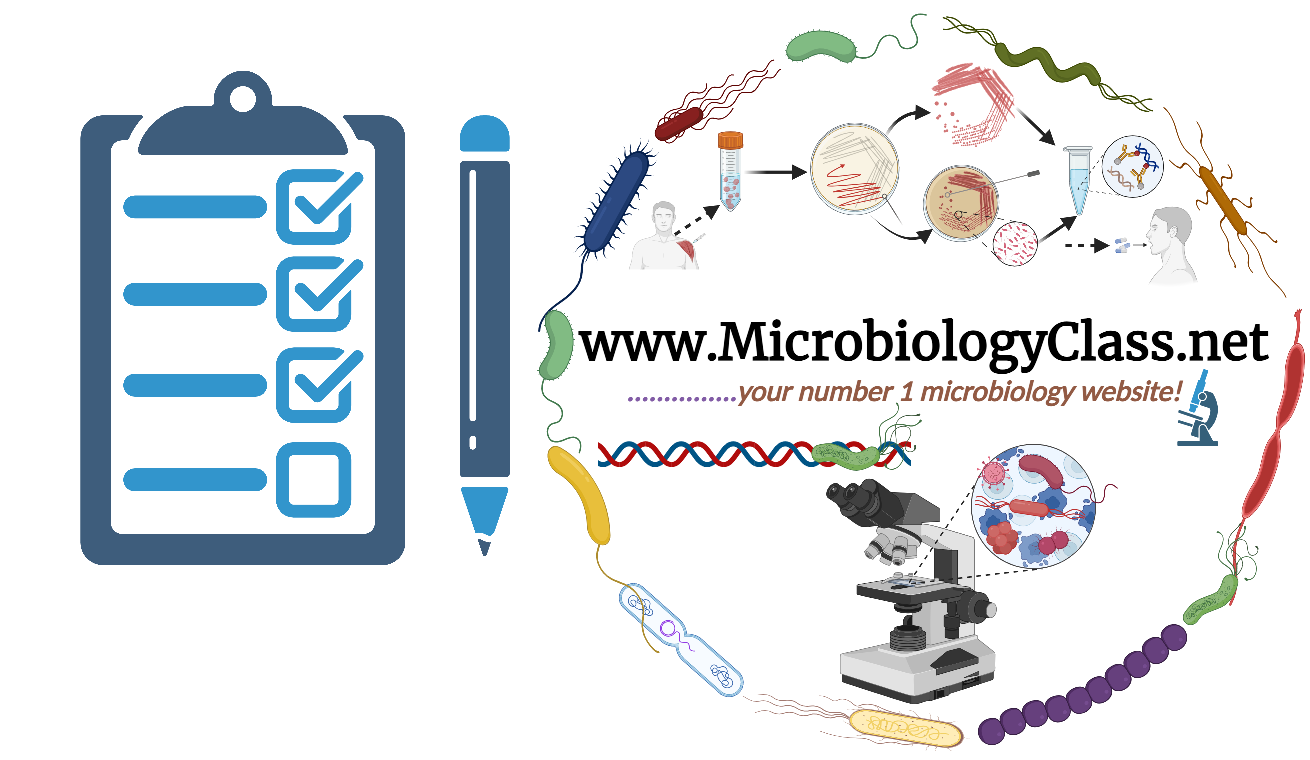MICROBIOLOGY is simply defined as the study of microorganisms. Microorganisms or microbes are organisms that are too small to be seen by the naked (unaided) eye. Microorganism is the term applied to all microscopically small living organisms. However, some of the organisms studied in this important field of the biological sciences (i.e., microbiology) are macroscopic in nature and thus can be seen even with the naked eye. Typical example is the mushrooms – which are fruiting bodies of fungi, a class of microorganism. Microorganisms cause disease in plants, animals and humans. Those microorganisms that cause disease are called pathogens or pathogenic microorganisms. Only few microorganisms are pathogens. Microorganisms play a crucial part in the ecosystem. They are ubiquitous in nature; and play significant roles in the sustenance of life on earth especially through their degradative, recycling and biosynthetic activities.
The phrase “microbiology” was derived from three Greek words: micros (meaning “small”), bios (meaning “life”) and logos (meaning “science”). It is all about the study of microbial cells and how they work and affect man, plant, animals and the environment. The study of microbiology encompasses the diversity and evolution of microbial cells, and how different forms of microbial life (including Bacteria, Viruses, Algae, Archaea, Protozoa, Fungi) affect the other non-microbial life forms. It encompasses the impact of microorganisms in the world including their numerous activities (both beneficial and harmful) in the soil, water, in the human and animal body, in plants and even in the food that we eat. Microbiology is the foundation of all biological sciences because one way or the other (either directly or indirectly), microorganisms affect all forms of life on planet earth.
Microbiology is an applied biological science which deals with many important practical problems in agriculture, medicine and even in the industry (e.g., food and chemical industry). Microbiology has to do with the study of organisms that at some point in their life exist as single cells and contain a nucleic acid genome that can replicate, and ensure the continuity of that particular organism. It is true that microorganisms are too tiny to be seen with unaided (naked) eyes, but there are yet some other groups of microorganisms which are larger and quite visible enough to be seen by the naked eyes. Typical examples among this group of microorganisms that can be seen by the naked eyes are some algae and fungi. Examples are the filamentous algae and bread moulds (i.e., fungi that attack spoiled bread) and some mushrooms. Some bacteria are also visible to the eyes without a microscope, and they are Epulopiscium and Thiomargarita bacteria.
Microbiology employs techniques such as the use of culture media (for the successful isolation and growth of microorganisms) and sterilization (for decontamination purposes) to mention a few. But the field of microbiology would not have been anticipated without the successful development of a tool – “the microscope” – which made microbiology to be outstanding in among the other biological sciences. The discovery of the microscope set the foundation for the development and study of microbial forms of life which are too minute to be seen by the unaided (naked) eyes. The existence of microorganisms was unknown until the discovery and development of the microscope. The microscope is an optical instrument which can magnify (enlarge) small objects or entities (e.g., microorganisms) which cannot be seen by the naked eyes.
The microscope was invented in the early 17th century, and the microscope as at that time where mainly of two types – the simple microscope and the compound microscope. Simple microscopes have a single lens of very short focal length while compound microscopes have two double convex lens system including objective and ocular lens with higher magnifying power than the simple microscopes. Electron microscope is another category of microscope with higher magnifying power than the simple and compound microscopes. Electron microscopes can be used to view and observe even smaller forms of microbial life like the viruses, which cannot be seen by ordinary light microscopes.
The scope of microbiology is broad. Microbiology is both a basic and applied science. Microbiology has an impact on many fields including but not limited to medicine, agriculture, biochemistry, food science, ecology, genetics and molecular biology. Because the various aspect or areas of microbiology are inter-related, an applied microbiologist should be familiar with basic microbiology. However, microbiologists may be interested in specific types of organisms which depict what they are eventually called including: Virologists (those that study viruses); Bacteriologists (those that study bacteria); Mycologists (those that study fungi); Protozoologists (those that study protozoa); and Phycologists or Algologists (those that study algae).
In addition to the organisms they may be interested in, Microbiologists may also be interested in the activities or characteristics of these microorganisms including: Microbial cytology (those that study microbial cell components); Microbial morphology (those that study the structure of microbes); Microbial physiology (those that study the life processes of microbes); Microbial ecology (those that study the activities of microbes in their habitat/niche); Microbial genetics and molecular biology (those that study microbes at the molecular level); and Microbial taxonomy (those that are concerned with the identification, classification and naming of microbes).
Microbiologists may also have a more applied focus. This aspect of microbiology is known as applied microbiology. Applied microbiology is the application of microbiological principles and techniques in the production of economically useful products/services, and for solving of societal problems. It is the exploitation of microorganisms for the production of a specific product including medicines, food, fuel and beverages to mention a few. The different areas of applied microbiology includes: Industrial microbiology (the area that exploits microbes for use in industrial processes such as in waste water treatment, bioremediation and fermentation processes); Medical microbiology (the area that studies pathogenic microbes and the role of microbes in human diseases); Pharmaceutical microbiology (the area which studies microbes that are related to the production of antibiotics, enzymes, vitamins, vaccines, and other pharmaceutical products); Agricultural microbiology (the area which studies agriculturally relevant microorganisms; and it encompass soil microbiology and plant microbiology/pathology); Food and Dairy microbiology (the area which study microorganisms that cause food spoilage and food borne diseases; and it encompass the application of microorganisms to produce foods); and Environmental microbiology (the area which study the function and diversity of microbes in their natural environments). Other scope of microbiology such as aero-micrbiology and geomicrobiology also exist.
Microbiology as a career can be very fulfilling and rewarding – owing to the fact that this field is now ripe with varying opportunities for those who wish to seek a profession in this area. Microbiologists are invaluable as they are now on the fore front of virtually all the biomedical sciences including medicine where the help and assistance of microbiologists are required in the development of methods for the prevention, detection, diagnosis and treatment of infectious diseases which are caused by pathogenic microorganisms. The scientific achievements of microbiologists both in time past and now have been, and are still fueling research and developments in the areas of biotechnological, pharmaceutical, biochemical, medical and chemical industries. Microbiologists also play important roles in the public health sector, university education and their research centers, the government, and the food and beverage industries – where the principles of microbiology is applied to solve several problems of man, animals and the environment.
Microbiologists also provide teaching and training assistance in virtually all the biological sciences in educational institutions. The study of microbiology has played major roles in the advancement of human health and welfare, especially through the production of medicines and vaccines used for the treatment and prevention of infectious diseases in human population. Microbiology in addition to studying microorganisms also focuses on every aspect that has to do with microorganisms-human interactions and microorganisms-environment interactions. Students who choose microbiology as their course of study in the university have many options in the field of microbiology, with which they can turn around their love for biology into a more challenging, impactful, fulfilling and rewarding career.
References
Black, J.G. (2008). Microbiology: Principles and Explorations (7th ed.). Hoboken, NJ: J. Wiley & Sons.
Madigan M.T., Martinko J.M., Dunlap P.V and Clark D.P (2009). Brock Biology of Microorganisms, 12th edition. Pearson Benjamin Cummings Inc, USA.
Prescott L.M., Harley J.P and Klein D.A (2005). Microbiology. 6th ed. McGraw Hill Publishers, USA. Pp. 296-299.
Ryan K, Ray C.G, Ahmed N, Drew W.L and Plorde J (2010). Sherris Medical Microbiology. Fifth edition. McGraw-Hill Publishers, USA.
Salyers A.A and Whitt D.D (2001). Microbiology: diversity, disease, and the environment. Fitzgerald Science Press Inc. Maryland, USA.
Discover more from Microbiology Class
Subscribe to get the latest posts sent to your email.





